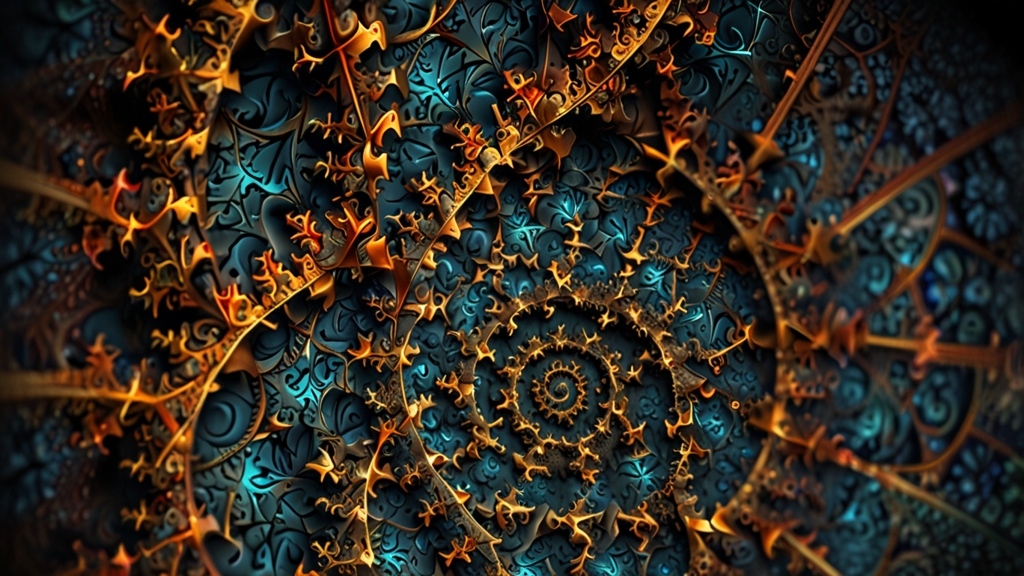Unlocking the Mysteries of Fractal Geometry
Fractal geometry is a fascinating field of mathematics that delves into the complexities of shapes and patterns often found in nature. The term "fractal" was coined by Benoît B. Mandelbrot in 1975, derived from the Latin word "fractus," meaning broken or fractured. Unlike traditional Euclidean geometry, which deals with smooth and regular shapes, fractal geometry explores irregular and infinitely complex structures. These entities are characterized by self-similarity, meaning they exhibit similar patterns at every scale. This article aims to unlock the mysteries of fractal geometry and illustrate its profound implications across various disciplines.
The Basics of Fractal Geometry
At its core, a fractal can be thought of as a never-ending pattern. This pattern repeats itself at different scales, making fractals uniquely complex and infinitely detailed. A classic example of a fractal is the Mandelbrot set, a set of complex numbers that generates an intricate, self-similar pattern. Another famous fractal is the Sierpinski triangle, which subdivides equilateral triangles into smaller triangles ad infinitum.
“I conceived, developed, and applied a new fractal geometry capable of describing the splintered shape of a rough coastline. This discovery convinced me that fractals were also a new instrument for modeling many computations of elemental phenomena occurring in nature.” – Benoît B. Mandelbrot
Fractals have a few key properties that set them apart from more conventional geometric shapes:
- Self-Similarity: Fractals appear similar regardless of the scale at which they are viewed. This can be exact self-similarity, where patterns repeat perfectly, or statistical self-similarity, where patterns are similar in a less rigid sense.
- Fractional Dimensions: Unlike classical geometric shapes that have whole-number dimensions (1D, 2D, 3D), fractals can have fractional dimensions. This is related to their level of complexity and can be determined using mathematical techniques like the box-counting method.
- Recursive Definition: Fractals are often defined using recursive algorithms, where a simple base pattern is repeatedly applied to generate more complex structures.
Applications of Fractal Geometry
Fractal geometry is not merely a mathematical curiosity; it has profound applications across numerous fields:
- Nature: Many natural phenomena exhibit fractal characteristics, such as the branching of trees, the shape of coastlines, and the structure of snowflakes. These natural fractals help scientists understand the underlying principles governing environmental patterns.
- Medicine: Fractals are used in medical imaging, particularly in analyzing complex structures like the human vascular system or lung tissue. Their fractal nature can help diagnose diseases and disorders.
- Art and Design: Artists and architects employ fractal geometry to create visually appealing and intricate designs. Fractals have been a source of inspiration in everything from digital art to the structural design of buildings.
- Technology: In computer graphics, fractals are used to generate realistic textures and landscapes. Fractal algorithms simulate natural complexity in a computationally efficient manner.
“Fractals are beautiful structures in which we can see how complex forms arise from simple rules recursively applied.” – John H. Conway
The Future of Fractal Geometry
As our understanding of fractal geometry deepens, its potential applications continue to broaden. Innovations such as fractal antennas promise more efficient communication technologies, while fractal-based algorithms could revolutionize data compression and encryption. Research in fractal geometry also holds promise in chaos theory and the study of dynamic systems, offering insights that transcend traditional mathematical boundaries.
In conclusion, fractal geometry is a journey into the infinitely complex and endlessly intriguing patterns that shape our world. By unlocking its mysteries, we gain not only mathematical insights but also a deeper appreciation for the wondrous complexity present in nature and human-made systems.












